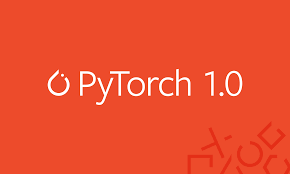点击上方“AI公园”,关注公众号,选择加“星标“或“置顶”
导读作者:IgorSusmelj
编译:ronghuaiyang
PyTorch1.0之后,越来越多的人选择使用PyTorch,今天给大家介绍一个github项目,作者通过自己使用PyTorch的实际工程经验,总结出了一套非常有用的使用PyTorch的最佳实践,涉及到使用PyTorch的方方面面,看了之后非常有收获!

不是PyTorch的官方风格指南。本文总结了使用PyTorch框架进行深度学习的一年多经验中的最佳实践。请注意,我们分享的经验大多来自研究和创业的视角。
这是一个开放的项目,欢迎其他合作者编辑和改进文档。
该文档有三个主要部分。首先,简要回顾一下Python中的最佳实践,然后介绍一些使用PyTorch的技巧和建议。最后,我们分享了一些使用其他框架的见解和经验,这些框架通常对我们改进工作流有帮助。
我们推荐使用Python 3.6+
根据我们的经验,我们推荐使用Python 3.6+,因为它具有以下特性,这些特性对于简洁的代码非常方便:
从Python 3.6开始支持typing
从Python 3.6开始支持f string
Python风格指南回顾
我们尝试遵循Python的谷歌样式指南。
请参考文档丰富的谷歌提供的python代码风格指南。
我们在此提供最常用规则的摘要:
命名规范
| 类型 | 规范 | 例子 |
|---|---|---|
| Packages & Modules | lowerwithunder | from prefetch_generator import BackgroundGenerator |
| Classes | CapWords | class DataLoader |
| Constants | CAPSWITHUNDER | BATCH_SIZE=16 |
| Instances | lowerwithunder | dataset = Dataset |
| Methods & Functions | lowerwithunder() | def visualize_tensor() |
| Variables | lowerwithunder | background_color='Blue' |
IDEs
代码编辑器
通常,我们推荐使用IDE,比如visual studio code或PyCharm。而VS Code在相对轻量级的编辑器中提供语法高亮和自动完成功能,PyCharm有许多用于处理远程集群的高级功能。
Jupyter Notebook vs Python Scripts
一般来说,我们建议使用 jupyter notebooks进行初步探索/尝试新的模型和代码。
如果你想在更大的数据集上训练模型,就应该使用Python脚本,因为在更大的数据集上,复现性更重要。
我们的推荐的工作流:
从jupyter notebook开始
研究数据和模型
在notebook的单元格中构建类/方法
将代码移动到python脚本
在服务器上进行训练/部署
| Jupyter Notebook | Python Scripts |
|---|---|
| + Exploration | + Running longer jobs without interruption |
| + Debugging | + Easy to track changes with git |
| - Can become a huge file | - Debugging mostly means rerunning the whole script |
| - Can be interrupted (don't use for long training) | |
| - Prone to errors and become a mess |
库
常用的库:
| Name | Description | Used for |
|---|---|---|
| torch | Base Framework for working with neural networks | creating tensors, networks and training them using backprop |
| torchvision | todo | data preprocessing, augmentation, postprocessing |
| Pillow (PIL) | Python Imaging Library | Loading images and storing them |
| Numpy | Package for scientific computing with Python | Data preprocessing & postprocessing |
| prefetch_generator | Library for background processing | Loading next batch in background during computation |
| tqdm | Progress bar | Progress during training of each epoch |
| torchsummary | Keras summary for PyTorch | Displays network, it's parameters and sizes at each layer |
| tensorboardx | Tensorboard without tensorflow | Logging experiments and showing them in tensorboard |
文件结构
不要把所有层和模型都放在同一个文件中。最佳实践是将最终的网络分离到一个单独的文件中(network .py),并将层、损失和操作符保存在各自的文件中(layers.py,loss.py,ops.py)。完成的模型(由一个或多个网络组成)应该在一个具有其名称的文件中引用(例如yolov3.py,DCGAN.py)
主例程、各自的训练脚本和测试脚本应该只从具有模型名称的文件中导入。
使用PyTorch构建神经网络
我们建议将网络分解为更小的可重用部分。网络是一个神经网络。模块由操作或其他神经网络组成。模块作为构建块。损失函数也是nn.Module。因此,可以直接集成到网络中。
继承自nn.Module的类,必须有一个forward方法来实现相应层或操作的前向。
nn.module可以在输入数据上使用self.net(input),这就是使用了 call()方法来通过模块提供输入。
output = self.net(input)PyTorch的一个简单的网络
对于单输入单输出的简单网络,请使用以下模式:
class ConvBlock(nn.Module):
def __init__(self):
super(ConvBlock, self).__init__()
block = [nn.Conv2d(...)]
block += [nn.ReLU()]
block += [nn.BatchNorm2d(...)]
self.block = nn.Sequential(*block)
def forward(self, x):
return self.block(x)
class SimpleNetwork(nn.Module):
def __init__(self, num_resnet_blocks=6):
super(SimpleNetwork, self).__init__()
# here we add the individual layers
layers = [ConvBlock(...)]
for i in range(num_resnet_blocks):
layers += [ResBlock(...)]
self.net = nn.Sequential(*layers)
def forward(self, x):
return self.net(x)请注意以下几点:
我们重用简单的循环构建块,如ConvBlock,它由相同的循环模式(卷积、激活、归一化)组成,并将它们放入单独的nn.Module中
我们建立一个所需层的列表,最后使用nn.Sequential()将它们转换成一个模型。我们在list对象之前使用*操作符来展开它。
在前向传递中,我们只是通过模型运行输入
在PyTorch中使用带有跳跃连接的网络
class ResnetBlock(nn.Module):
def __init__(self, dim, padding_type, norm_layer, use_dropout, use_bias):
super(ResnetBlock, self).__init__()
self.conv_block = self.build_conv_block(...)
def build_conv_block(self, ...):
conv_block = []
conv_block += [nn.Conv2d(...),
norm_layer(...),
nn.ReLU()]
if use_dropout:
conv_block += [nn.Dropout(...)]
conv_block += [nn.Conv2d(...),
norm_layer(...)]
return nn.Sequential(*conv_block)
def forward(self, x):
out = x + self.conv_block(x)
return out在这里,实现了一个ResNet block的跳跃连接。PyTorch允许在向前传递期间进行动态操作。
在PyTorch使用多个输出的网络
对于一个需要多个输出的网络,例如使用一个预先训练好的VGG网络构建感知机loss,我们使用以下模式:
class Vgg19(torch.nn.Module):
def __init__(self, requires_grad=False):
super(Vgg19, self).__init__()
vgg_pretrained_features = models.vgg19(pretrained=True).features
self.slice1 = torch.nn.Sequential()
self.slice2 = torch.nn.Sequential()
self.slice3 = torch.nn.Sequential()
for x in range(7):
self.slice1.add_module(str(x), vgg_pretrained_features[x])
for x in range(7, 21):
self.slice2.add_module(str(x), vgg_pretrained_features[x])
for x in range(21, 30):
self.slice3.add_module(str(x), vgg_pretrained_features[x])
if not requires_grad:
for param in self.parameters():
param.requires_grad = False
def forward(self, x):
h_relu1 = self.slice1(x)
h_relu2 = self.slice2(h_relu1)
h_relu3 = self.slice3(h_relu2)
out = [h_relu1, h_relu2, h_relu3]
return out请注意以下事项:
我们使用torchvision提供的预训练模型。
我们把网络分成三个部分。每个切片由来自预训练模型的层组成。
我们将冻结的网络设置成requires_grad = False
返回一个包含切片的三个输出的列表
自定义Loss
即使PyTorch已经有很多标准的损失函数,有时也需要创建自己的损失函数。为此,需要创建一个单独的文件 losses.py ,然后扩展 nn.Module类创建自定义损失函数:
class CustomLoss(torch.nn.Module):
def __init__(self):
super(CustomLoss,self).__init__()
def forward(self,x,y):
loss = torch.mean((x - y)**2)
return loss训练模型的推荐代码结构
注意,我们使用了以下模式:
我们使用从prefetch_generator中的BackgroundGenerator加载下一个batch的数据
我们使用tqdm来监控训练进度,并显示计算效率。这有助于我们发现数据加载管道中的瓶颈。
# import statements
import torch
import torch.nn as nn
from torch.utils import data
...
# set flags / seeds
torch.backends.cudnn.benchmark = True
np.random.seed(1)
torch.manual_seed(1)
torch.cuda.manual_seed(1)
...
# Start with main code
if __name__ == '__main__':
# argparse for additional flags for experiment
parser = argparse.ArgumentParser(description="Train a network for ...")
...
opt = parser.parse_args()
# add code for datasets (we always use train and validation/ test set)
data_transforms = transforms.Compose([
transforms.Resize((opt.img_size, opt.img_size)),
transforms.RandomHorizontalFlip(),
transforms.ToTensor(),
transforms.Normalize((0.5, 0.5, 0.5), (0.5, 0.5, 0.5))
])
train_dataset = datasets.ImageFolder(
root=os.path.join(opt.path_to_data, "train"),
transform=data_transforms)
train_data_loader = data.DataLoader(train_dataset, ...)
test_dataset = datasets.ImageFolder(
root=os.path.join(opt.path_to_data, "test"),
transform=data_transforms)
test_data_loader = data.DataLoader(test_dataset ...)
...
# instantiate network (which has been imported from *networks.py*)
net = MyNetwork(...)
...
# create losses (criterion in pytorch)
criterion_L1 = torch.nn.L1Loss()
...
# if running on GPU and we want to use cuda move model there
use_cuda = torch.cuda.is_available()
if use_cuda:
net = net.cuda()
...
# create optimizers
optim = torch.optim.Adam(net.parameters(), lr=opt.lr)
...
# load checkpoint if needed/ wanted
start_n_iter = 0
start_epoch = 0
if opt.resume:
ckpt = load_checkpoint(opt.path_to_checkpoint) # custom method for loading last checkpoint
net.load_state_dict(ckpt['net'])
start_epoch = ckpt['epoch']
start_n_iter = ckpt['n_iter']
optim.load_state_dict(ckpt['optim'])
print("last checkpoint restored")
...
# if we want to run experiment on multiple GPUs we move the models there
net = torch.nn.DataParallel(net)
...
# typically we use tensorboardX to keep track of experiments
writer = SummaryWriter(...)
# now we start the main loop
n_iter = start_n_iter
for epoch in range(start_epoch, opt.epochs):
# set models to train mode
net.train()
...
# use prefetch_generator and tqdm for iterating through data
pbar = tqdm(enumerate(BackgroundGenerator(train_data_loader, ...)),
total=len(train_data_loader))
start_time = time.time()
# for loop going through dataset
for i, data in pbar:
# data preparation
img, label = data
if use_cuda:
img = img.cuda()
label = label.cuda()
...
# It's very good practice to keep track of preparation time and computation time using tqdm to find any issues in your dataloader
prepare_time = start_time-time.time()
# forward and backward pass
optim.zero_grad()
...
loss.backward()
optim.step()
...
# udpate tensorboardX
writer.add_scalar(..., n_iter)
...
# compute computation time and *compute_efficiency*
process_time = start_time-time.time()-prepare_time
pbar.set_description("Compute efficiency: {:.2f}, epoch: {}/{}:".format(
process_time/(process_time+prepare_time), epoch, opt.epochs))
start_time = time.time()
# maybe do a test pass every x epochs
if epoch % x == x-1:
# bring models to evaluation mode
net.eval()
...
#do some tests
pbar = tqdm(enumerate(BackgroundGenerator(test_data_loader, ...)),
total=len(test_data_loader))
for i, data in pbar:
...
# save checkpoint if needed
...在PyTorch使用多GPU训练
PyTorch中有两种使用多个gpu进行训练的模式。
从我们的经验来看,这两种模式都是有效的。然而,第一个方法的结果是代码更好、更少。由于gpu之间的通信更少,第二种方法似乎具有轻微的性能优势。
分割每个网络的batch
最常见的一种方法是简单地将所有“网络”的batch分配给各个gpu。
因此,如果一个模型运行在一个批处理大小为64的GPU上,那么它将运行在两个GPU上,每个GPU的批处理大小为32。这可以通过使用nn.DataParallel(model)自动完成。
将所有的网络打包进一个super网络,并把输入batch分割
这种模式不太常用。实现这种方法的repository在pix2pixHD implementation by Nvidia
该做的和不该做的
避免在nn.Module的forward方法找那个使用Numpy代码
Numpy运行在CPU上,比torch代码慢。由于torch的开发思路与numpy相似,所以大多数numpy函数已经得到了PyTorch的支持。
从main代码中分离DataLoader
数据加载管道应该独立于你的主训练代码。PyTorch使用后台来更有效地加载数据,并且不会干扰主训练过程。
不要在每一次迭代中打印日志结果
通常我们训练我们的模型数千个迭代。因此,每n步记录损失和其他结果就足以减少开销。特别是,在训练过程中,将中间结果保存为图像可能非常耗时。
使用命令行参数
使用命令行参数在代码执行期间设置参数(批处理大小、学习率等)非常方便。跟踪实验参数的一个简单方法是打印从parse_args接收到的字典:
...
# saves arguments to config.txt file
opt = parser.parse_args()
with open("config.txt", "w") as f:
f.write(opt.__str__())
...可能的话,使用.detach()将张量从图中释放出来
PyTorch跟踪所有涉及张量的操作,以实现自动微分。使用.detach()防止记录不必要的操作。
使用.item()打印标量数据
你可以直接打印变量,但是建议使用variable.detach()或variable.item()。在早期的PyTorch版本< 0.4中,必须使用.data访问一个变量的张量。
在nn.Module中使用函数调用而不是直接用forward
下面这两种方式是不一样的:
output = self.net.forward(input)
# they are not equal!
output = self.net(input)FAQ
如何让实验可复现?
我们建议在代码开头设置以下种子:
np.random.seed(1)
torch.manual_seed(1)
torch.cuda.manual_seed(1)如何进一步提升训练和推理速度?
在Nvidia GPUs上,你可以在代码的开头添加以下行。这将允许cuda后端在第一次执行时优化你的图。但是,要注意,如果改变网络输入/输出张量的大小,那么每次发生变化时,图都会被优化。这可能导致运行非常慢和内存不足错误。只有当输入和输出总是相同的形状时才设置此标志。通常情况下,这将导致大约20%的改善。
torch.backends.cudnn.benchmark = True使用tqdm + prefetch_generator模式计算效率的最佳值是什么?
这取决于使用的机器、预处理管道和网络大小。在一个1080Ti GPU上使用SSD硬盘,我们看到一个几乎为1.0的计算效率,这是一个理想的场景。如果使用浅(小)网络或慢速硬盘,这个数字可能会下降到0.1-0.2左右,这取决于你的设置。
即使我没有足够的内存,我如何让batch size > 1?
在PyTorch中,我们可以很容易地实现虚拟batch sizes。我们只是不让优化器每次都更新参数,并把batch_size个梯度加起来。
...
# in the main loop
out = net(input)
loss = criterion(out, label)
# we just call backward to sum up gradients but don't perform step here
loss.backward()
total_loss += loss.item() / batch_size
if n_iter % batch_size == batch_size-1:
# here we perform out optimization step using a virtual batch size
optim.step()
optim.zero_grad()
print('Total loss: ', total_loss)
total_loss = 0.0
...在训练过程中如何调整学习率?
我们可以直接使用实例化的优化器得到学习率,如下所示:
...
for param_group in optim.param_groups:
old_lr = param_group['lr']
new_lr = old_lr * 0.1
param_group['lr'] = new_lr
print('Updated lr from {} to {}'.format(old_lr, new_lr))
...在训练中如何使用一个预训练的模型作为损失(没有后向传播)
如果你想使用一个预先训练好的模型,如VGG来计算损失,但不训练它(例如在style-transfer/GANs/Auto-encoder中的感知损失),你可以使用以下模式:
...
# instantiate the model
pretrained_VGG = VGG19(...)
# disable gradients (prevent training)
for p in pretrained_VGG.parameters(): # reset requires_grad
p.requires_grad = False
...
# you don't have to use the no_grad() namespace but can just run the model
# no gradients will be computed for the VGG model
out_real = pretrained_VGG(input_a)
out_fake = pretrained_VGG(input_b)
loss = any_criterion(out_real, out_fake)
...在PyTorch找那个为什么要用.train()* 和 .eval()?
这些方法用于将BatchNorm2d或Dropout2d等层从训练模式设置为推理模式。每个模块都继承自nn.Module有一个名为istrain的属性。.eval()和.train()只是简单地将这个属性设置为True/ False。有关此方法如何实现的详细信息,请参阅PyTorch中的module代码。
我的模型在推理过程中使用了大量内存/如何在PyTorch中正确运行推理模型?
确保在代码执行期间没有计算和存储梯度。你可以简单地使用以下模式来确保:
with torch.no_grad():
# run model here
out_tensor = net(in_tensor)如何微调预训练模型?
在PyTorch你可以冻结层。这将防止在优化步骤中更新它们。
# you can freeze whole modules using
for p in pretrained_VGG.parameters(): # reset requires_grad
p.requires_grad = False什么时候用Variable(...)?
从PyTorch 0.4开始Variable和Tensor就合并了,我们不用再显式的构建Variable对象了。
PyTorch在C++上比Python快吗?
C++版本的速度快10%
TorchScript / JIT可以加速代码吗?
Todo...
PyTorch代码使用cudnn.benchmark=True会变快吗?
根据我们的经验,你可以获得约20%的加速。但是,第一次运行模型需要相当长的时间来构建优化的图。在某些情况下(前向传递中的循环、没有固定的输入形状、前向中的if/else等等),这个标志可能会导致内存不足或其他错误。
如何使用多GPUs训练?
Todo...
PyTorch中的.detach()是怎么工作的?
如果从计算图中释放一个张量,这里有一个很好的图解:http://www.bnikolic.co.uk/blog/pytorch-detach.html
 —
END—
—
END—
英文原文:https://github.com/IgorSusmelj/pytorch-styleguide

请长按或扫描二维码关注本公众号
喜欢的话,请给我个好看吧!![]()





















 9万+
9万+











 被折叠的 条评论
为什么被折叠?
被折叠的 条评论
为什么被折叠?








